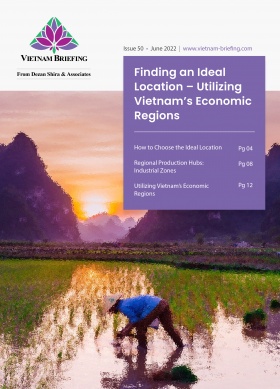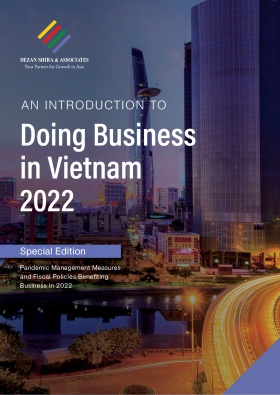Vietnam – Australia Trade and Investment: CPTPP Helps Fuel Growth
Vietnam and Australia trade have been on an upward trajectory with the Comprehensive and Progressive Agreement for Trans-Pacific Partnership (CPTPP) further adding and cementing bilateral trade between both countries. With Australia-China trade relations hit by political tensions, Vietnam has become increasingly favorable for Australian investors. Vietnam Briefing highlights the growing trade between both countries and opportunities for investment.
Since Vietnam and Australia first established their diplomatic relations in 2018, the relationship has grown from defense cooperation to a strategic one. As of May 2022, both countries are among the top 12 trading partners for each other, with Australia being among the top official development assistance (ODA) donor countries, and accounting for a large number of overseas Vietnamese students.
Vietnam and Australia are both members of at least three free trade agreements (FTAs), namely the ASEAN-Australia-New Zealand Free Trade Area (AANZFTA), the Comprehensive and Progressive Agreement for Trans-Pacific Partnership (CPTPP), and the Regional Economic Comprehensive Economic Partnership (RCEP).
Additionally, the two economies are highly complementary. Australia is a reliable supplier of services and raw materials that Vietnam’s exporters require, and Australian consumers enjoy Vietnam’s high-quality products in their homes and workplaces.
Bilateral trade
The CPTPP has first worked to boost a two-way trade as it brings tax breaks and regulatory incentives. According to data from the General Statistics Office (GSO) of Vietnam, last year, two-way trade between Vietnam and Australia hit US$12.4 billion for the first time, up more than 49 percent compared with that of 2020, making Vietnam the 12th largest partner of Australia and Australia the 10th biggest of Vietnam. The value of shipments to Australia also reached more than US$4.45 billion, a year-on-year increase of 23 percent.
Exports
Vietnam’s exports to Australia have been growing, reaching US$1.38 billion in the first quarter of 2022, an increase of 32.36 percent against the same period last year.
Sharp increases were seen in Vietnam’s export of various agricultural and industrial products to Australia, with 84 percent up for coffee, 51 percent up for aquatic products, 41 percent up in rubber, and 26 percent up in the electric cable. Notably, the shipments of iron and steel skyrocketed by more than 500 percent year on year.
| Vietnam Exports to Australia (2021) | |
|---|---|
| Electrical, electrical equipment | US$1.87 billion |
| Footwear | US$43.5 million |
| Minerals fuels, oils | US$303.8 million |
| Furniture, prefab buildings | US$275.77 million |
| Apparel | US$212.9 million |
| Fish, aquatics | US$189.8 million |
Source: Trading Economics
Imports
In 2021, Vietnam spent nearly US$8 billion in importing goods from Australia, up nearly 70 percent from that of 2020. Specifically, the country is buying more essential materials from Australia, such as coal, iron ore, metals, cotton, wheat, and animal feed. In particular, Vietnam’s import value of coal from Australia in Q1 surged 176 percent year on year and that of cotton shot up 333 percent.
| Australian Exports to Vietnam (2021) | |
|---|---|
| Mineral fuels, oils | US$1.81 billion |
| Ores slag and ash | US$1.36 billion |
| Cereals | US$1 billion |
| Cotton | US$616 million |
| Aluminum | US$324.4 million |
| Live animals | US$243.4 million |
| Iron & steel | US$239.8 million |
| Copper | US$225.9 million |
Source: Trading Economics
FDI
By the end of 2021, there were about 550 Australian investment projects in Vietnam with a total value of nearly US$2 billion, ranking 19th among foreign investors in the country.
However, such a performance is yet to match the full potential of the bilateral trade between the two countries considering that Australia is the 15th biggest FDI investor in the world and Vietnam among the top 20 FDI destinations globally in 2020.
In addition, given the three common FTAs with Vietnam, Australia only ranks 19th among foreign investors in Vietnam, still behind other partners who are yet to have an FTA with Vietnam such as Taiwan or Switzerland.
This likely implies that Australian investors are still concerned about the challenges of the investment and business environment in Vietnam, including troublesome administrative procedures, taxes, poor law enforcement, and several under-the-table costs, along with limitations in infrastructure and high-quality labor.
In view of these developments, the Vietnamese and Australian Governments in December 2021, announced the Enhanced Economic Engagement Strategy (EEES) to enhance trade and double bilateral investment.
The strategy aims to bring together a holistic picture that recognizes the potential of the two economies. The two-way investment would focus on education, skills, and training; resources and energy; agriculture, forestry, and fisheries; manufacturing; tourism; science, technology, and innovation; digital economy; and other services sectors.
However, to further improve the country’s investment and business environment, Vietnam would also need to enhance governance capacity, speed up administrative reform, and increase human resource quality. More efforts should be made to strengthen dialogue with investors and foster connections between Vietnamese firms and their foreign peers.
Major Australia investment in Vietnam
The majority of FDI investment from Australia is in the processing and manufacturing industry (47.2 percent), with steel producer BlueScope leading this industry and also the biggest Australian investor in Vietnam.
The remaining FDI inflow belongs to accommodation and restaurant services (8.1 percent), construction and real estate (7.1 percent), agro-fisheries (6.4 percent), healthcare (6.1 percent), and mining (5.9 percent), entertainment (5.5 percent) and finally education-training (4.1 percent).
Noticeably, with 6.4 percent in agro-fisheries, Australia is one of the top investors in Vietnam’s agro-fisheries, an industry that is long known for its relatively low foreign investment. Australia’s noticeable presence in Vietnam’s education-training industry and agriculture is also a distinct characteristic of Australia’s FDI when compared with FDI investment from other countries.
Opportunities
There is little direct competition in the structure of trade between Australia and Vietnam but instead a strong complementarity, which presents opportunities for further trade cooperation. And, as Vietnam’s economy has grown and its citizens’ standard of living improved, so has its demand for energy, raw materials, food, and education, which opens investment opportunities for investors.
Australia’s well-performing industries such as financial services, security, healthcare, and education, accounting for the bulk of Australia’s investment in other developed economies, have only recently been developed in Vietnam, underlining the investment prospect in Vietnam has significant potential for the foreseeable future.
About Us
Vietnam Briefing is produced by Dezan Shira & Associates. The firm assists foreign investors throughout Asia from offices across the world, including in Hanoi, Ho Chi Minh City, and Da Nang. Readers may write to vietnam@dezshira.com for more support on doing business in Vietnam.
We also maintain offices or have alliance partners assisting foreign investors in Indonesia, India, Singapore, The Philippines, Malaysia, Thailand, Italy, Germany, and the United States, in addition to practices in Bangladesh and Russia.
- Previous Article Einen idealen Standort finden – Vietnams Wirtschaftsregionen nutzen – Neueste Ausgabe des Vietnam Briefing Magazine
- Next Article Vietnam’s Dong Nai Province: Investment Hub of the South







